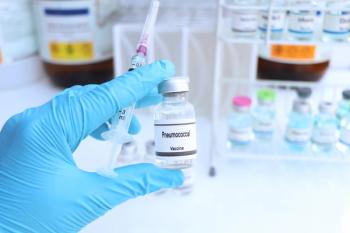
HHS issues updated HIV guidelines
The panel advised against the use of fluticasone with ritonavir because the combination resulted in significantly reduced serum cortisol concentrations.
Highlights from the most recent HHS guidelines for HIV-1 treatment
Last month, the Department of Health & Human Services published the latest update to Guidelines for the Use of Antiretroviral Agents in HIV-1 Infected Adults and Adolescents. The guidelines have been revised to include new goals and treatments. The guidelines were researched, written, and updated by HHS' Panel on Clinical Practices for Treatment of HIV Infection.
For highly treatment-experienced patients, the goal of treatment was simply to keep the disease from progressing further. Now, the treatment goal is the same for all treatment-experienced patients, regardless of the number of regimens they have tried: "The goal of treatment for patients with prior drug exposure and drug resistance is to reestablish maximal virologic suppression," the panel stated in the new guidelines.
The panel has also amended the recommendation for changing antiretroviral therapy for virologic failure. Patients falling into this category should be evaluated to identify specific drugs that have been active for them. Previously, the panel had suggested at least three or more active agents should be used in designing a new regimen. The panel has now reduced the minimum number of agents to two, but it has qualified the recommendation by specifying the agents be fully active. The panel defined fully active drugs as those "likely to demonstrate antiretroviral activity on the basis of both the treatment history and susceptibility on drug-resistance testing."
As for specific drug regimen recommendations, the panel has revised the guidelines to include new and promising agents. The HHS guidelines now recommend using drugs that have demonstrated activity against drug-resistant HIV, such as potent protease inhibitors (PIs) boosted with ritonavir (Norvir, Abbott). One such drug is tipranavir (Aptivus, Boehringer Ingelheim).
Tipranavir is a new PI that has been effective in highly treatment-experienced patients. Tipranavir, coadministered with ritonavir, was approved by the Food & Drug Administration in June for this patient population. Ritonavir increases circulating levels of PIs, including tipranavir. "Boosting" PIs with small doses of ritonavir has become common in antiretroviral therapies. The HHS panel did caution that the efficacy of tipranavir may wane as HIV mutates to become resistant to it. Resistance may be held off longer if another active drug, such as an entry inhibitor, is also added to the regimen.
Enfuvirtide (Fuzeon, Roche) is an HIV entry inhibitor. It has been proven to have antiretroviral activity in highly treatment-experienced patients. The HHS panel reviewed studies of treatment-experienced patients who were given new regimens when their old regimens failed. "Patients who received more active drugs [e.g., an active ritonavir-boosted PI and enfuvirtide] had a better and more prolonged viro-logic response than those with fewer active drugs in their regimen," the panel said in the new guidelines.
Enfuvirtide is currently administered subcutaneously, but a needleless system is awaiting FDA approval. The Biojector version of enfuvirtide is expected to be better received and tolerated by patients.
Certain regimens are not as effective as they once were, according to the panel, and the guidelines warned against using them. One addition to the list is the combination of didanosine (Videx EC, Bristol-Myers Squibb) and tenofovir (Viread, Gilead). The guidelines now state, "In the setting of immuno-logic failure, it would be reasonable to change one of these drugs."
Newsletter
Pharmacy practice is always changing. Stay ahead of the curve with the Drug Topics newsletter and get the latest drug information, industry trends, and patient care tips.






































































































































